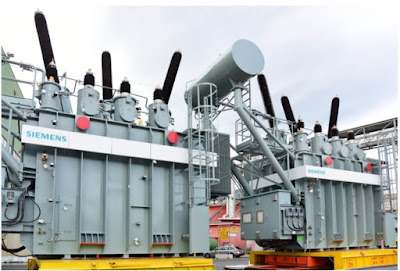Transformers are essential components in electrical engineering, playing a crucial role in power transformation. Understanding Transformer Losses, the factors that influence their efficiency and performance is important for optimizing their operation.
Table of Contents

Resistive Loss (Copper Loss)
Resistive loss, also known as copper loss or I2R loss, occurs due to the resistance in the transformer’s copper windings. This loss results in some energy being converted to heat.
The resistive loss, P, can be calculated using the formula:
P = I2R
Higher frequencies can increase resistive loss due to the skin effect, which confines current to the conductor’s surface. Harmonics can further exacerbate these effects.
Proper cooling is essential to maintain transformer efficiency and longevity. As temperature increases, resistance in the copper windings rises, leading to greater power loss. Effective cooling systems help stabilize resistance and improve overall performance.
Eddy Current and Hysteresis Losses
Eddy Current Loss
Eddy current loss occurs when alternating magnetic fields induce currents in the transformer’s metal core. These currents generate heat, resulting in energy loss. The heat generated is proportional to the square of the frequency.
To mitigate eddy current losses, transformer cores are constructed using thin laminations of metal, such as silicon-iron or nickel-iron alloys, insulated with varnish. These laminations, typically 0.014 inches thick, limit the path of eddy currents and reduce power losses.
Hysteresis Loss
Hysteresis loss results from the realignment of magnetic domains within the core material when subjected to alternating current. This continuous realignment consumes energy and produces heat.
The magnitude of hysteresis loss is related to the width of the hysteresis loop, with wider loops indicating greater losses. Using highly permeable core materials, such as silicon steel, can reduce hysteresis loss by decreasing the opposition to domain adjustments.
Harmonics can increase both eddy current and hysteresis losses by demanding more frequent domain realignments and inducing stronger eddy currents.
Flux Loss in Transformers
Flux loss occurs when magnetic flux lines deviate from their intended path through the iron core, instead traveling through the surrounding air. This results in reduced energy transfer between the primary and secondary windings, decreasing transformer efficiency.
Core saturation is a primary cause of flux loss. When the iron core reaches its saturation point, it can no longer accommodate additional flux lines, forcing them to seek alternative routes through the air.
The reluctance ratio between air and iron (approximately 10,000 to 1) makes air a poor medium for flux lines. This high reluctance further reduces the effectiveness of stray flux lines in inducing voltage in the secondary winding.
To minimize flux loss, transformer design focuses on:
- Optimizing core material and geometry
- Avoiding core saturation
- Creating an efficient path for flux lines within the core
By addressing these factors, transformers can achieve higher efficiency and reliability.
Transformer Efficiency Calculation
Transformer efficiency is the ratio of output power to input power, expressed as a percentage. It indicates the proportion of input power successfully converted to useful output power.
The efficiency, η, is calculated using the formula:
η = (POUT / PIN) × 100%
Where POUT is the output power and PIN is the input power, both measured in watts.
For example, if a transformer has an output power of 1500 watts and an input power of 1525 watts, its efficiency would be:
η = (1500 / 1525) × 100% = 98.36%
Power transformer efficiencies typically range from 97% to 99%, depending on various factors such as design, materials, and operating conditions.
Transformer efficiency is important for reducing operational costs and environmental impact. By minimizing losses and maximizing efficiency, transformers can contribute to energy conservation and sustainability efforts.
Understanding and mitigating various losses is crucial for optimizing transformer efficiency. By addressing these challenges, we can enhance energy conversion processes and improve the reliability of electrical networks.